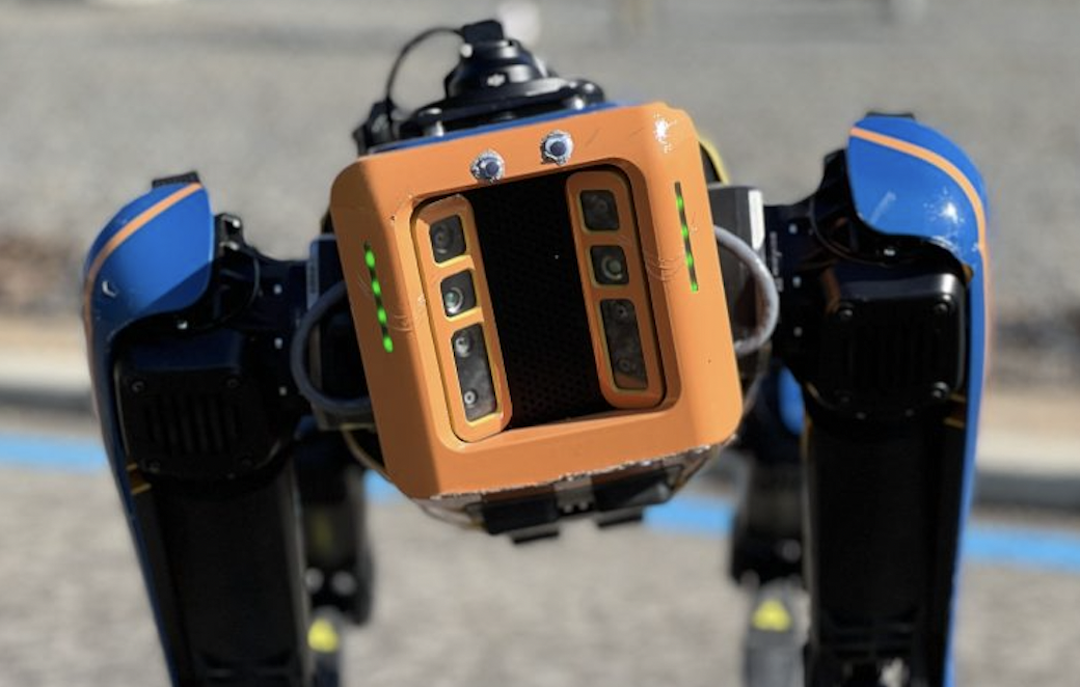Spot is the robotic dog introducing generative AI into the national workforce.
SA Power Networks obtained the mobile robot, known as Spot, back in 2020. The machine was an example of how AI could work alongside humans in different industries to enhance operations and make the best use of resources.
But how does Spot work? And what can researchers learn from it?

Spot, the mobile robot © SA Power Networks
Initial research
Initially, the robotic dog was obtained by project leader Muen Chen, Data and Decision Science Lead at SA Power Networks, to assess how the process of data collection could be enhanced.
He was working with an asset management team to collect data on electricity distribution assets such as transformers, powerlines and insulators. Typically, photographs, thermal inspections and light detection are the most common methods of data collection, however they are not automated and require significant time and resources.
According to Chen, “Robots enable people to apply their knowledge in the field.”
“The workforce is trained to look for defects and unusual things we can’t get robots to do yet, but with the help of robotics, they can delegate the basic data collection tasks to a fully automated platform.”
This opens up doorways for quicker and simpler data collection, saving time and ensuring company resources can be employed elsewhere. Obtaining Spot was the beginning of a search for better methods of data collection.
Training the tech
In order to ‘train’ Spot, the team from SA Power Networks used a method known as reinforcement learning. This involves rewarding positive behaviour to encourage the program to continue with the desired action.
“The idea with Spot was, if it knows how to go straight to a utility pole and take a picture, it gets a bigger reward,” explains Chen.
“But if Spot meanders around, taking a picture without a pole, it gets less of a reward.”
In order to produce the best possible outcomes, Chen worked closely with Michaela Mathews, an Innovation Graduate, and former SA Power Networks Machine Learning Engineer Deon Mai.
This cross-departmental collaboration ensured all aspects of Spot’s development were closely monitored and understood.
“To understand reinforcement learning, which is deep Python code combined with statistics concepts, we watched OpenAI’s lecture series together,” said Chen.
“Michaela helped me understand what certain formulas do and Deon explained how it’s reflected in Python.”
This super-team was able to train the mobile robot in the act of data collection using this learning structure.

Spot © SA Power Networks
On the job
Once Spot was properly ‘trained,’ the team released the robotic dog into the workforce. Spot was delivered to the robotics lab at the SA Power Networks Asset Access Training Building, where it supported several different areas of the business.
Spot can currently complete on-the-field data collection. It is provided with the necessary geographic information, and then navigates to the poles to take pictures. The robot is fitted with cameras that can pan, zoom and tilt to capture the best possible images. Spot also acts as a vessel to test other programs suggested by workers upon seeing Spot in action.
“Once people saw what Spot could do with the camera, they would ask, ‘What if we mount this on the back?’ or ‘What if we get it to go into the substation?’” said Chen.
Currently, Spot is primarily used to take photos in the field. By capturing assets like electricity poles, experts can correlate data quickly and simply. However, the team still needs to refine Spot’s program to ensure the system is functioning at its full capabilities.
“We got Spot not just to demonstrate that the technology works, but to show people that South Australia can be just as on top of the latest technology as a startup in Silicon Valley,” Chen reveals.
“It’s about creating awareness and understanding how AI can be used.”
Testing will continue with Spot, and experts believe more developments are on the horizon.
To learn more about technological advancements in Australia, click here.

